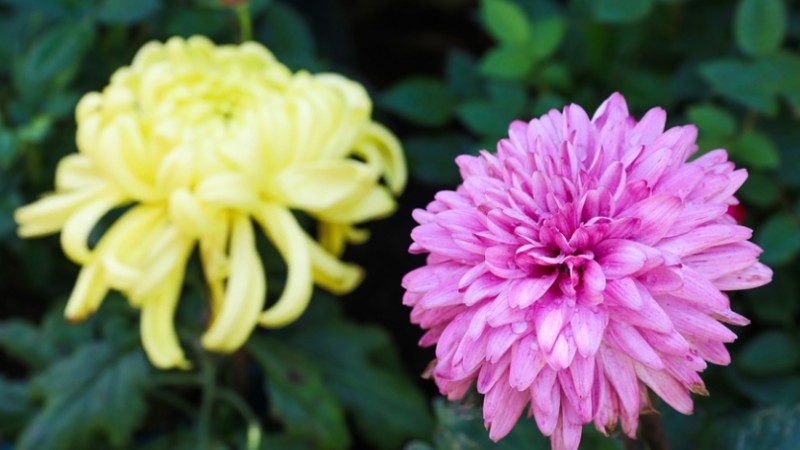Feature: China, Russia join efforts to protect bird migration routes
CHANGCHUN/MOSCOW, Nov. 8 (Xinhua) -- China and Russia have strengthened their ecological cooperation in recent years with the aim of protecting birds and their migration routes in both countries.
The two countries have also worked together to improve wetland conservation, and have exchanged relevant data to enhance the protection of bird populations.
COOPERATE TO BOOST BIRD POPULATIONS
Despite the cold temperatures that have hit northeast China, the Scirpus triqueter, a primary food of Siberian cranes, still grows in flocks at Momoge National Nature Reserve in Zhenlai County and Baicheng City of China's Jilin Province.
The nature reserve is located on the East Asian-Australasian Flyway, which is one of the nine major flyways for migratory birds in the world, with more than 5 million birds passing through here every year.
There are nearly 300 species of birds in the nature reserve alone including oriental storks, red-crowned cranes, and hooded cranes. Around 150,000 water birds stay here during the migration season.
"In the 1980s and 1990s, oriental storks were found nesting in trees at the reserve, but they have not been seen for a long time since then. In recent years, the number of oriental storks' nests at the reserve has increased to 15," said Zou Changlin, a senior engineer at the reserve.
The Momoge Nature Reserve is also an important stopover site for Siberian cranes. Around 3,500 Siberian cranes stop here in spring and autumn every year. After resting for about 100 days, they move to other stopover sites within the Siberian crane migration corridor. The starting points of the two-season migration of Siberian cranes are Poyang Lake in China and Kytalyk National Park in Russia.
Researchers have discovered a number of new habitats along the migration corridor since 2014. Such an increase in the habitats of migratory birds ensures the safety of the population during migration.
"The number of migratory birds has been increasing in recent years, thanks to the joint efforts of Russia and China," Amirkhan Amirkhanov, head of the Federal Service for Supervision of Natural Resources, said. He noted that Russia conducts an annual bird census, and the Siberian crane population and habitat locations, as data has shown, have increased.
The Poyang Lake National Nature Reserve Administration signed a Memorandum of Understanding on strategic cooperation with Kytalyk National Park for better protection and monitoring of the birds in December 2021.
ECOLOGICAL CHANGES
Northeast China is the first stop for Siberian cranes departing from Russia every autumn.
Since the 1970s, due to land desertification in Baicheng City, and subsequent water shortages and a dearth of the Scirpus triqueter plant, fewer migratory birds have chosen to stay at this location.
In recent years, in order to reverse ecological deterioration, a series of projects have been implemented in western Jilin Province to form a water network in the once severely saline-alkali land.
Songyuan City, a neighboring city of Baicheng, has become a famous location at home and abroad due to its winter fishing on Chagan Lake.
Yang Jingshuang, a staff member of the administration of Chagan Lake National Nature Reserve, said that the number of various migratory birds at the reserve has increased significantly this year. More than 200 oriental storks were spotted among these birds. Oriental storks are under first-class national protection and chose to stay here for the first time. The number of Eurasian spoonbills, which are under second-class national protection, has also topped 1,000.
"China, particularly the country's northeast part, has achieved fruitful results with regard to strengthening the protection of wild forests, wetlands and wildlife resources within recent years. We hope to continue to foster in-depth exchanges with China in this field," Amirkhanov said.
Voluntary teams across China have also played an important role in bird protection. As snowfalls tend to affect the foraging behaviors of migratory birds, those teams will feed the birds with small fish, corn and other food before they fly south.
EMERGING ECOTOURISM
An annual winter fishing-themed festival will be held at Chagan Lake in a little more than a month's time. Over the past five years, tourism revenue reached a total of 10.37 billion yuan (about 1.42 billion U.S. dollars) in Chagan Lake, and a total of 11.78 million tourists have visited the location.
At the same time, ecotourism is becoming more popular among Russians. Russia is currently focused on promoting biodiversity protection through ecotourism development projects and plans to build 24 new special nature reserves by the end of 2024. Kytalyk National Park, which was built in 2019 and home to Siberian cranes, is one of them.
Russia will use these new sites to promote the attractiveness of ecotourism. The accumulative number of tourists visiting the new nature reserves are expected to exceed 10 million by 2024.
Photos
Related Stories
- China, Russia to hold meeting of Yangtze-Volga cooperation council
- Russian student wins "Chinese Bridge" int'l championship
- Senior Chinese military officer holds talks with Russian defense minister
- 7th China Commodity Fair held in Moscow
- Moscow China Trade Center boosts pragmatic cooperation between China and Russia
Copyright © 2023 People's Daily Online. All Rights Reserved.









